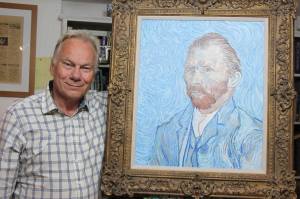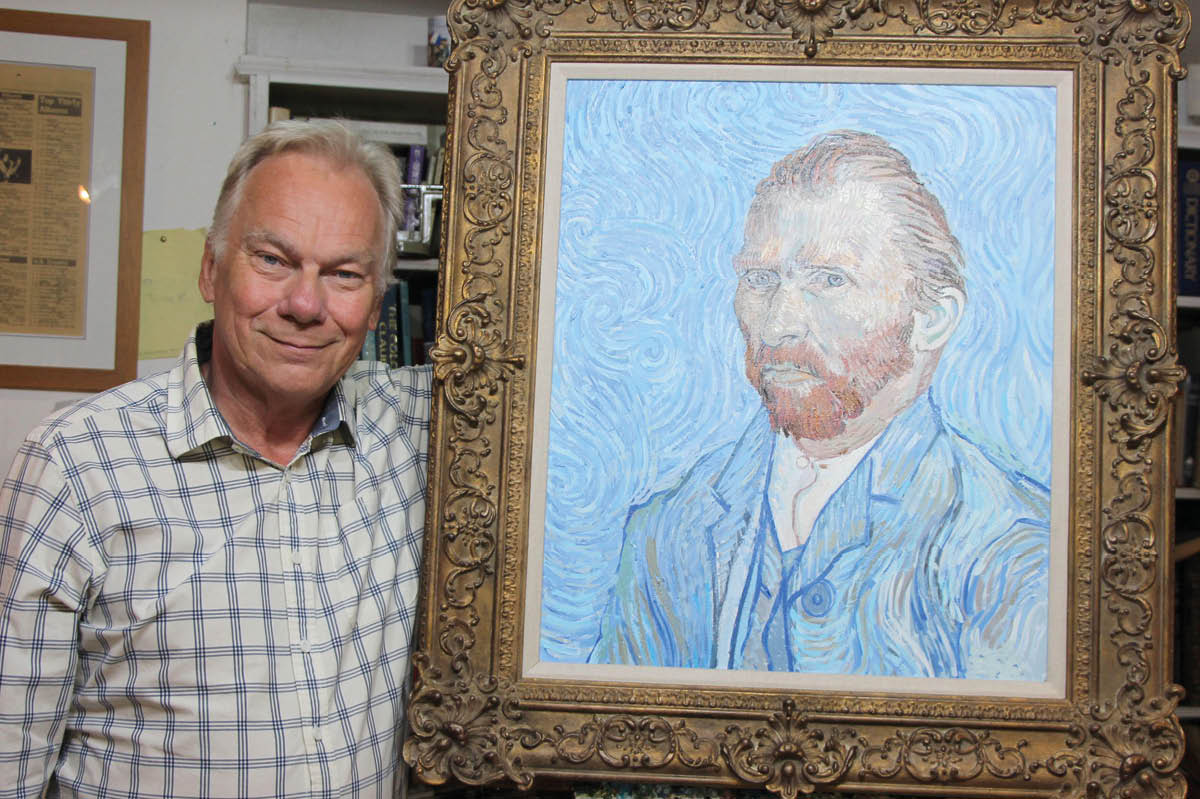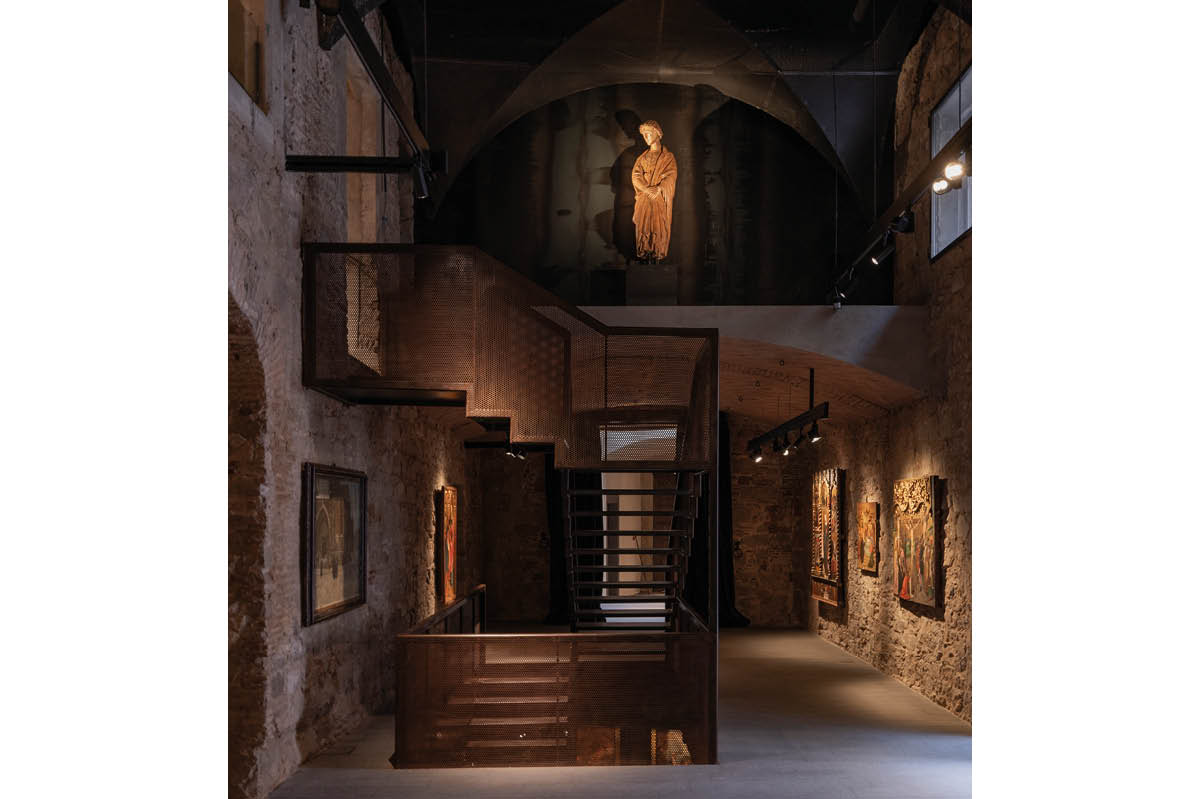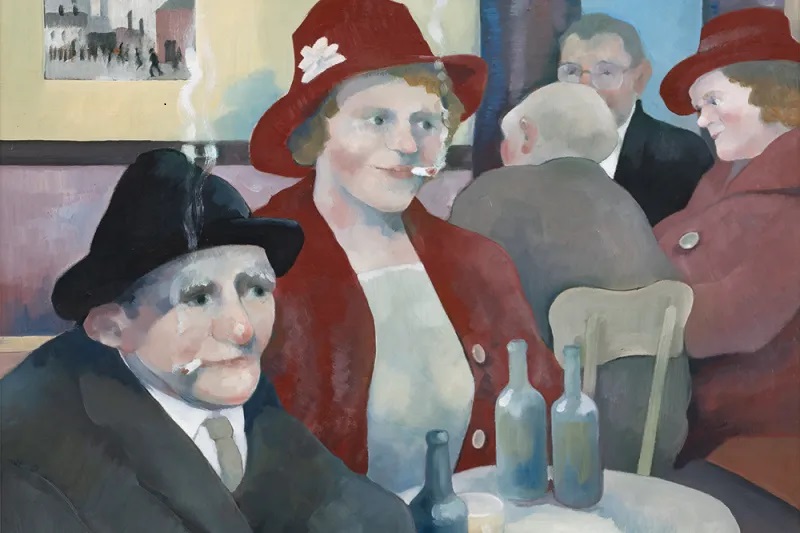Earlier this year, Saint Veronica went viral. A tweet observing that every painting of the saint made her look like a merchandise seller at the Crucifixion was liked more than 35,000 times and retweeted more than 6,700 times. Not bad for a first-century saint. I disagree slightly. Veronica doesn’t strike me so much as a proto T-shirt tout, more as an early Christian super-fan. ‘I touched the hem of his garment.’ ‘Yeah? Well, I literally mopped the sweat from his brow.’
The Sudarium of Saint Veronica is one of art history’s more peculiar subjects. While some saints and their attributes are easy to confuse (Tau? Sword? Saw? Tongs?), if there’s a lady in a painting holding up a square of linen scrim printed with the face of Christ, there’s no doubt she’s St V. A sudarium is a sweat cloth. Sudor: Latin, sweat. (Not to be confused — as this undergraduate art historian embarrassingly did — with sudatorium — the steam-room in a Roman bath.) More decorous accounts refer to Veronica’s veil. Specifically, the sudarium is the cloth with which Veronica wiped the face of Christ as he labored under the weight of the Cross on the road to Calvary and on which his features were eternally impressed. (Ver: true, icon: image.) In the Canterbury Tales, Chaucer’s Pardoner wears a ‘vernycle’, a pilgrim’s badge of Christ’s face, sewn into the cloth of his cap.
The original sudarium — take this with a pinch of laundry flakes — was hidden within a pillar of St Peter’s. Some say the relic survived the Sack of Rome, others that it was never there at all. The Sudarium and the Turin shroud are both examples of acheiropoieta, icons made without human hands. When a barista discovers the face of Christ in the foam of a cappuccino or burns a Jesus into the top of the toast, he is an inheritor of a rich iconographic tradition.
Saint Veronica isn’t in the gospels. She appears in later apocrypha and her story appealed to artists. The meeting with Veronica is one of the 14 Stations of the Cross — the sorrows borne by Christ on the day of his Crucifixion, Good Friday, as he carries the cross from Jerusalem to Mount Calvary. Artists tend to depict the terrible climax: the Crucifixion, the Deposition, the Entombment. Less often painted are the earlier sorrows. The encounter with Veronica is both the strangest and most touching of these scenes.
Veronica can be peaceful or dynamic. In Jacopo Bassano’s ‘The Way to Calvary’ (c.1544-5) in the National Gallery in London, Veronica rushes towards Christ like a nursemaid hurrying to wrap a shivering child in a towel. The cloth is pristine, still awaiting its divine impression. The corners are scrunched in Veronica’s hands. It’s such a plausible detail. Bassano hasn’t made it up: he’s seen someone hold a cloth just like that. Also in the National Gallery is ‘Saint Veronica with the Sudarium’ by an anonymous German master of the early 15th century. Here, Veronica, so dainty, so pinchingly neat, might be a Hausfrau giving her favorite tea towel an airing. In Hans Memling’s ‘Saint Veronica’, in the National Gallery of Art in Washington, Veronica sits in a field outside a walled city and contemplates her cloth. You can imagine, somewhere beyond the bounds of the picture, at the furthest end of the path, the horrors of the Crucifixion and events Veronica cannot bring herself to see. The Baroque Veronica made in marble by Francesco Mochi for Saint Peter’s flourishes her cloth like a matador’s cloak. Indeed, the most common pass with the cape in bullfighting is known as the ‘veronica’.
Where Saint Veronica appears not in a standalone scene but in a Passion sequence, she arrives as visual relief for both artist and audience. We have had the Last Supper, the Agony, the Betrayal, Christ Before Annas, Christ before Pilate, the Flagellation, Christ before Caiaphas, the Mocking of Christ, the Ecce Homo, Christ before Herod… Men, men, and men again. After the whipping and scourging and crowning with thorns, after the humiliation and injustice, comes tender, gentle Veronica. In Hieronymus Bosch’s ‘Christ Carrying the Cross’ (c.1515-6), she is the only woman in a leering, pressing crowd of men. Her cap and her cloth are strikingly white against the darkness of the scene.
We talk today about needing to ‘identify’ with a character in a play, a book or a film, about the need for ‘representation’.Well, imagine you’re a 15th-century Nuremberg girl or a daughter of 16th-century Venice. You might not see yourself in Mary, a virgin mother grieving for her only son, but you may very well find a kind of kinship with the younger Veronica. A role model with her roll of cloth.
Prints of Veronica have a special resonance, for what is a woodcut or an engraving but an impression upon a page? There is an excellent website — germanprints.ru — that reproduces more than 1,000 German woodcuts, engravings, etchings and dry-points from the Pushkin Collection. Here, you can see all 36 sheets of Albrecht Dürer’s ‘Small Passion’ (c.1510) and his rather marvelous etching ‘Sudarium Spread Out By An Angel’ (1516). The sudarium billows in the wind and the angel might be a washerwoman wrestling a pillowcase on to a line in a gale. Not for nothing has Veronica become the patron saint of laundry-workers and, more recently, photographers.
In Dürer’s ‘The Bearing of the Cross’ from his ‘Small Passion’ series, Christ practically crawls with the weight of the cross. His shoulder is at an unnatural angle, his neck is awkwardly wrenched. The crown of thorns is wound three tight times around his head. Veronica has fallen to her knees. The viewpoint of the scene is low. We are right down there with them. The cloth she holds isn’t a Bassano bath sheet; it is hardly larger than a hankie. Perhaps a handkerchief is all she has. The next scene is weirder. We leave the Via Dolorosa for a small, closed chamber. Veronica, now with a halo and flanked by Saints Peter and Paul, unfurls her cloth. At the centre is Christ’s floating, bodiless head.
Some artists do away with Veronica altogether and it is here that the iconography gets odd. There is a surreal subset of sudarium pictures in which the cloth is pinned across the picture plane with Christ’s face blazing forth. In the Mauritshuis’s ‘Sudarium of St Veronica’, painted by an anonymous Netherlandish master, the image of Christ weeps eerie, realistic tears. The thorn pricks on his forehead seem really to be bleeding. And how’s this for meta? His brow still glistens with sweat.
There aren’t many modern Saint Veronicas, but Henri Matisse made a sort of hieroglyph out of the sudarium. In the Stations of the Cross he designed as a tiled mural for the Chapel of the Rosary at Vence (1947–51), Matisse reduced each scene to sparest, sweeping pen strokes. Between us — my husband with his Jesuit prep school education and I, with my art history — could decipher only about half of the Stations. But the sudarium was unmistakable: a four-cornered knotted cloth, an oval skull of a face.
Strange as Saint Veronica’s legend is, its central message is simple: care, kindness, intercession. A message to meditate on at any Easter, but perhaps all the more so this year.
This article was originally published in The Spectator’s UK magazine. Subscribe to the US edition here.

























